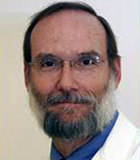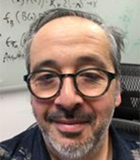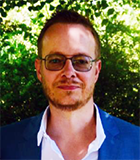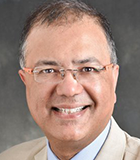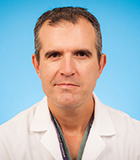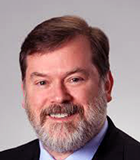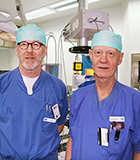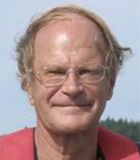Professor Kamil Ugurbil holds the McKnight Presidential Endowed Chair Professorship in Radiology, Neurosciences, and Medicine and is the Director of the Center for Magnetic Resonance Research (CMRR) at the University of Minnesota (MN, USA). He is a giant in the field of functional MRI (fMRI). fMRI was first achieved simultaneously by two independent teams, one of which was led by Kamil Ugurbil and his colleague Seiji Ogawa from Bell laboratories. His research brings together physics and instrumentation with physiology and neurochemistry to assess cerebral function and underlying physiology and morphology. He pushes the boundaries of neuroimaging, particularly as related to brain function and connectivity. These advances are now extended to the Human Brain Connectome project launched by the NIH Neuroscience Blueprint initiative which is bound to revolutionize the field of psychiatry. We are honored to have him present “I can see what you feel – mind if I look into your mind?” On the road to visualize pain, (un)consciousness, intent to move, depression….
It is a pleasure to welcome back Professor Roderic G. Eckenhoff, Austin Lamont Professor of Anesthesia at the University of Pennsylvania (Philadelphia, PA, USA). After graduating from Northwestern University Medical School (1978), he joined the Naval Submarine Medical Research Laboratory in Groton, CT. After completing his anesthesia residency at Penn, he pursued basic science training in the Andrew Somlyo lab (and at Penn as well). He accidentally discovered an approach to measure subcellular concentrations of anesthetics, ultimately discovering anesthetic photolabeling, and adapting a series of traditionally biophysical approaches to study anesthetic mechanisms. He is the senior author of the Recommendations for the nomenclature of cognitive change associated with anesthesia and surgery-2018, published jointly in the major anesthesia journals. How do we define the cognitive changes we observe in our patients postoperatively, and can we do something about it? “On how to treat the brain well in the perioperative phase – or can we? What is PND (perioperative neurocognitive disorder) and how is it different from POCD?”
Alexander Proekt is Assistant Professor of Anesthesiology at the University of Pennsylvania where he is a practicing neuroanesthesiologist. While studying medicine at Mount Sinai School of Medicine in New York, he completed a PhD on biophysics of small networks in the lab of Klaude Weiss. He graduated as an anesthesiologist from Weill Cornell Medical College (New York, NY, USA) and completed postdoctoral fellowships with Prof. Donald Pfaff (Rockefeller University) in neuroscience and with Marcello Magnasco (Rockefeller University) in physics. He studies neurophysiological mechanisms that anesthetics use to extinguish consciousness, and processes that allow the brain to recover consciousness after anesthesia. To study these questions, he uses a combination of techniques including invasive recordings of neuronal activity, computational modeling, pharmacology, and optogenetics. His lecture is entitled: “Neuronal inertia: why emergence is more complicated than you thought.” *The* excuse to sleep late?
Rik Carette is staff Anesthesiologist at the OLV hospital, Aalst, Belgium and longtime research associate of Jan Hendrickx. Rik studied Medicine at the University of Louvain, Belgium, where he also completed his anesthesiology residency. After a 1 year PKPD modeling fellowship with Jan Hendrickx in the OLV hospital in Aalst (Belgium), he embraced the clinical use of PKPD visualization and monitoring systems. He has been enthusiastically teaching residents about pharmacokinetics and pharmacodynamics in the operating room. He thrives in “operating room #10”, equipped with the SmartPilot, BIS, qCON/qNOX, ANI , and – recently – the NOL-index. The RUG loop data collection system allows him to collect more data than he ever will be able to analyze and publish. He will explain how he monitors noxious stimuli transmission in the unconscious patient: “Noxiometry – The NOL-index”.
Jaideep Pandit is consultant anesthesiologist at Oxford University Hospitals, Oxford, UK. He served on numerous boards in numerous positions. He was the Academic Strategy Officer of the Royal College of Anesthetists (2005-7), publishing the National Strategy for Academic Anesthesia; member of the Court of Examiners of the Royal College of Surgeons of England; editor of Anesthesia; member of the Research Council of the National Institute of Academic Anesthesia; and Scientific Officer of the national Difficult Airway Society. In 2014, he published NAP5 on ‘Accidental Awareness during General Anesthesia’ (UK and Ireland), the culmination of a 4-year Royal College project making over 60 recommendations for clinical practice. Can patients indicate whether they are awake if we do not paralyze the muscles of one arm? Let’s find out: “Taking the Auspices: Palm reading for beginners. The isolated fore arm technique.”
Chris Connor is Assistant Professor of Anaesthesiology at Brigham and Women’s Hospital, Harvard Medical School and adjunct Research Associate Professor of the Department of Physiology & Biophysics and the Department of Biomedical Engineering at Boston University. His research interests are on machine learning, anesthesia control systems, and the mechanisms of action of volatile agents on consciousness. His work on anesthesia and C.elegans has been honored as among the 10 best science abstracts to the presented at the ASA conference in San Francisco last year. Technology is evolving at a rapid pace, and AI, Artificial Intelligence, will be at the heart of it. Dr. Connor will introduce us the basics of AI in his lecture “Machine Learning In A Hurry: AI TL;DR : ) “
Dr. Teodor Grantcharov is a Staff Surgeon at St. Michael’s Hospital and a Professor of Surgery at the University of Toronto, where he holds the Keenan Chair in Surgery. He also holds a Canada Research Chair in Simulation and Surgical Safety. He completed his general surgery residency at the University of Copenhagen, obtained a doctoral degree in Medical Sciences at the University of Aarhus in Denmark, and did a fellowship in Minimally Invasive Surgery at the Western Pennsylvania Hospital, Temple University School of Medicine in Pittsburgh, USA. His academic interest are minimally invasive surgery, surgical education and patient safety. He developed the OR black box, a system that collects a vast number of data from equipment, monitors, operating room doors, people movement… , intended to help us learn more about safety. But could it one day e.g. predict incision time and increase the concentration of the anesthetics just a few minutes prior to that? The OR black box: building the road to autopilot.
Julian M. Goldman studied anesthesiology (with a fellowship in medical device informatics) at the University of Colorado and joined Harvard Medical School (Dpt. of Anesthesia, CCM, and Pain Medicine) at Massachusetts General Hospital in 2002. He advised and/or lectured on computer and information sciences at the National Science Foundation, CDC, FDA, IEEE EMBS (largest international society of biomedical engineers), healthcare standardization and innovation. He received numerous prestigious awards. At NAVAt VII, he will introduce us to the nec plus ultra of closed loops and AI: pre-hospital autonomous casualty care. Imaging having sustained a motor vehicle accident. A flying drone scoops you up within minutes. The interior consists of a host of completely autonomous systems that sedates you, secures your airway, ventilate you, place an IV to volume resuscitates you etc. Fiction – or fact soon? My guarding angels: pre-hospital autonomous casualty care. AI beyond your wildest dreams.
Stellan Eriksson completed his CRNA training at Jönköping Hospital (Sweden) and
joined the anesthesia department at St. Görans Hospital from 1978 until 1987. From
1987 to1989 he worked for Gambro-Engström AB as clinical application specialist for
ELSA, the first workstation with an electronic vaporizer designed to facilitate low
flow anesthesia. After returning as CRNA to St Görans Hospital (1990), he became
division leader for anesthesia equipment and IT coordinator. Together with Sixten
Bredbacka, attending anesthesiologist at St Görans Hospital, they managed to have
the entire department consistently work with manual closed circuit anesthesia. In a
self-experiment, Dr. Bredbacka’s low FIO2 of 8% (!) resulting in an SpO2 of 72%
while breathing from a circle breathing system with a 1 L/min air fresh gas flow
convincingly demonstrated the dangers of inhaling air at reduced fresh gas flows
(J Clin Mon Comp 2016;30:251-2). This passion, dedication, and perseverance is what they share with Dr. Leo Vaes.
Professor Göran Hedenstierna works at the Department of Clinical Physiology at Uppsala University, Sweden (senior prof since 2008) which holds a Hedenstierna lab and organizes the Hedenstierna symposium. He is *the* authority on atelectasis and gas exchange during anesthesia, authoring Miller’s Anesthesia chapter on “Respiratory Physiology and Pathophysiology ”. The space provided by this entire flyer would not suffice to list his contributions to our profession. He established an animal research laboratory with Ph.D. students and visiting scientists from approximately 20 countries. A PubMed search (March 2019) with his name yields more than 503 references – and counting. We therefore are proud to have this giant in our field lecturer at NAVAt for the fourth time. His energy, genuine interest, witty humor, encouragement, mentorship, expertise and willingness to contribute to NAVAt are major forces that help the organizers drive the NAVAt meeting. This year, we look forward to his lecture “Visualizing atelectasis: ready for prime time?” Has technology evolved up to a point where we might be able to use it intraoperatively to help titrate PEEP and O2? Maybe even build a closed loop?


